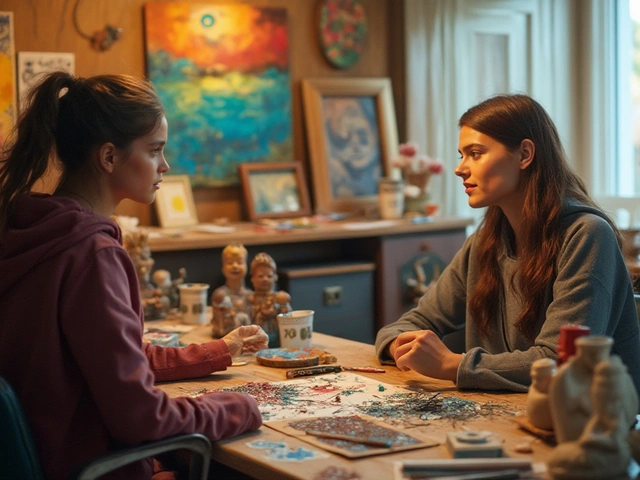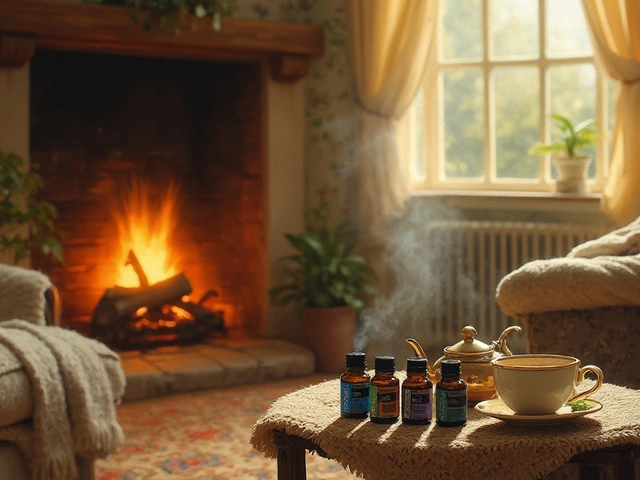Let's dive into the fascinating world of creative arts therapies, where art serves not just as a form of expression but as a path to healing. Different forms of creative expression like painting, music, dance, and drama can profoundly help individuals in ways conventional therapy might not.
These therapy approaches tap into your innate creativity, promoting emotional wellness and providing a platform for self-discovery. As people engage in creative processes, they find that art can unlock doors to areas of emotion and thought previously inaccessible.
In the following sections, we'll explore how these rich, multifaceted therapies can foster personal growth and enrich lives. Whether you're an artist or someone who doesn't consider themselves creative, there's something within these therapies that can resonate with everyone.
- Understanding Creative Arts Therapies
- Benefits of Engaging in Art and Therapy
- Incorporating Arts into Daily Life
- Success Stories and Testimonials
Understanding Creative Arts Therapies
Creative Arts Therapies encompass a range of therapeutic practices that use artistic expression as a means of fostering healing and personal growth. These therapies typically include art therapy, music therapy, dance/movement therapy, and drama therapy. Each discipline uniquely engages the imagination, offering a non-verbal means to explore thoughts and emotions. Unlike conventional talk therapy, creative arts therapies use the creative process to delve into the psyche, providing individuals the freedom to express their innermost feelings without the constraints of words.
One of the core benefits of creative arts therapies is their adaptability. Regardless of age, ability, or cultural background, these therapeutic practices offer something universally resonant: the power of creativity. For instance, art therapy allows individuals to create visual symbols that encapsulate experiences or emotions, giving tangible form to the intangible. This can be especially useful for those who find it difficult to articulate their feelings or have experienced trauma. Through movement, dance therapy engages the body to access feelings, improve physical coordination, and balance emotional expression.
There's a solid base of research highlighting the efficacy of these therapies. According to a study published in the Journal of the American Art Therapy Association, participants engaging in art therapy showed significant reductions in stress and anxiety levels. Similarly, music therapy has been praised for its ability to improve cognitive function and emotional resilience, outlined in multiple meta-analyses examining its impact on mental health. Moreover, according to a leading figure in the field, painter and educator Shaun McNiff once said,
"The creative arts therapies emphasize the value of personal expression in healing mind, body, and spirit."
To understand the scope of creative arts therapies, one must consider the psychological and physiological mechanisms at play. When engaging in art-making or performance, the brain releases dopamine and endorphins, chemicals known for boosting mood and enhancing well-being. This biochemical response is part of why participants often report a sense of calm and rejuvenation post-session. Incorporating these therapies into regular mental health treatment plans has shown to improve outcomes, providing more holistic care for individuals facing various psychological challenges.
Perhaps most compellingly, creative arts therapies open up avenues for community building and social connection. Participating in group sessions allows individuals to share their creations with others, fostering empathy and understanding. This collaborative aspect can be particularly beneficial for those experiencing loneliness or isolation. This blend of personal and social engagement is what makes these therapies such a powerful tool in the quest for healing and personal development.
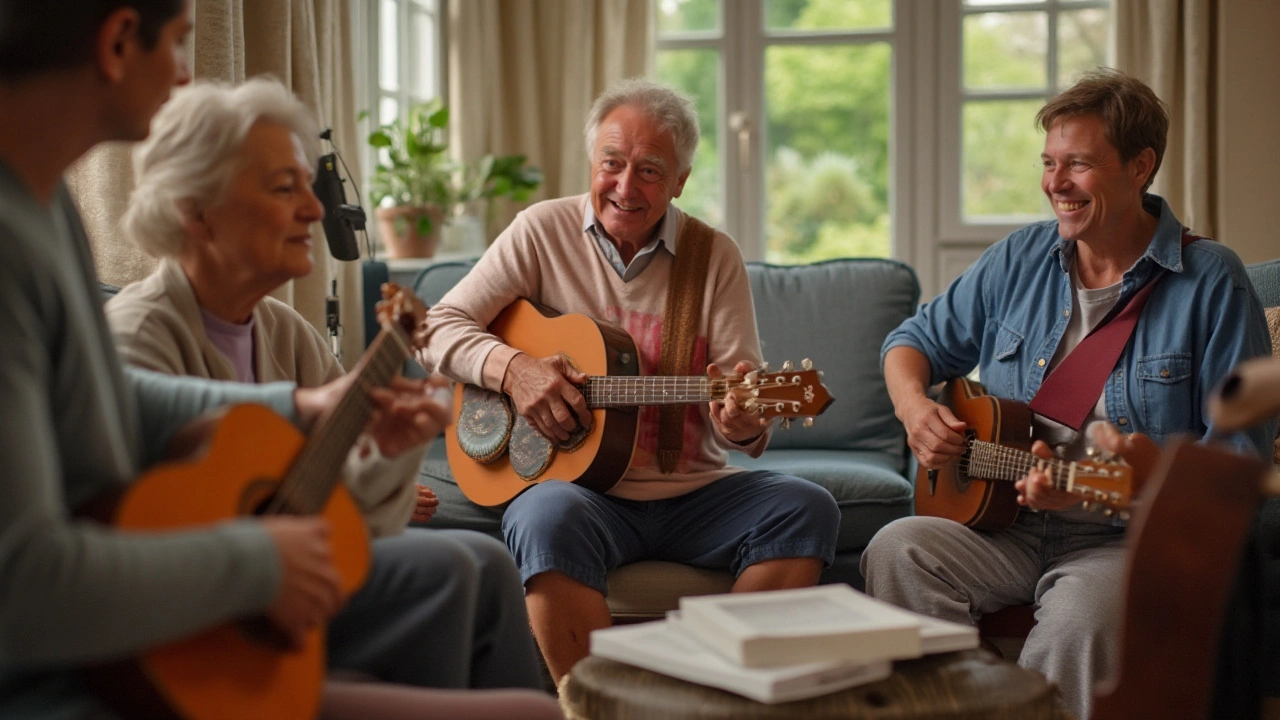
Benefits of Engaging in Art and Therapy
In the realm of creative arts therapies, art intertwines seamlessly with emotional exploration and healing. Participating in these therapeutic practices offers a wealth of benefits that extend beyond the canvas or stage. First, engaging with arts taps into our subconscious, providing an avenue for expressing complicated emotions without the constraints of language. This expression can be particularly beneficial for those who find it hard verbally to articulate feelings, making it a versatile tool for emotional relief. Moreover, studies have shown that art therapy can significantly reduce levels of stress hormones in the body, fostering a sense of calm and relaxation. Through the act of creation, individuals often experience a cathartic release that contributes to mood enhancement and a decrease in anxiety symptoms, leading to improved mental wellness.
The psychological benefits extend to enhancing self-awareness and personal growth. As people delve into artistic creation, they oftentimes discover hidden parts of themselves, leading to a deeper understanding of one's inner world. This self-knowledge can motivate individuals to make constructive changes in their lives, promoting personal development. The healing arts also bolster self-esteem as individuals see tangible results from their creative efforts. Completing a piece of art or mastering a dance routine can provide a sense of accomplishment and empowerment, essential on the road to emotional healing.
Besides the psychological impact, there are social and cognitive gains to be had. Participating in group art therapy sessions encourages social interaction and collaboration, which are crucial for people struggling with isolation. These sessions can create bonds and promote empathy, helping individuals to better connect with others. On a cognitive level, engaging in creative arts therapies enhances problem-solving skills and stimulates neural pathways in the brain associated with creativity and innovation. This kind of mental exercise can even improve memory function and increase brain plasticity, which is particularly beneficial as we age.
“According to a study published in the Journal of the American Art Therapy Association, participation in weekly art sessions resulted in a significantly improved quality of life for trauma survivors,” highlights Dr. Laura Wheat, a renowned expert in the field of art therapy.
Incorporating arts into one's therapeutic journey isn't just for self-reflection and healing; it offers a unique form of play and joy. Often, adults forgo creativity, seeing it as a child’s pastime, but revisiting it can lead to unexpected happiness. This joy, stemming from creation and expression, can boost one's overall life satisfaction. Embracing the healing arts invites playfulness back into life, which is a potent antidote to modern life's stress.
Overall, the integration of creative arts therapies into personal healing strategies presents an enriching and multi-dimensional approach to fostering emotional and mental well-being. Whether through music, art, or dance, these practices hold the potential to unlock significant personal growth and provide individuals with tools to navigate life's challenges more effectively.
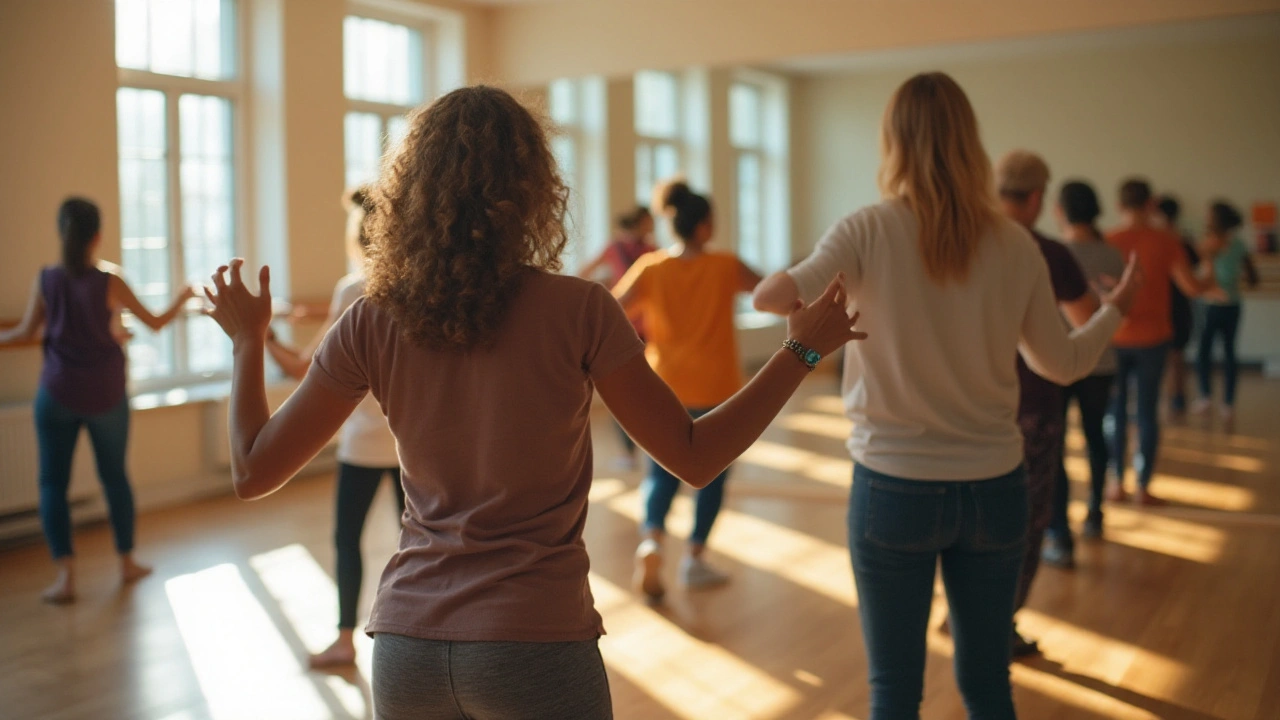
Incorporating Arts into Daily Life
In our fast-paced world, integrating creative arts therapies into daily life might initially seem daunting, yet many find it greatly rewarding. This approach not only enriches the soul but also enhances mental wellness and aids in stress management. Imagine transforming mundane activities into opportunities for artistic expression—whether through doodling during your morning coffee ritual, or humming a tune on your way to work. Each artistic endeavor offers a unique escape from the routine, a chance to connect with a deeper part of oneself.
Studies have shown that even short bursts of artistic activity can lead to increased dopamine levels, contributing to improved mood and mental clarity. For someone juggling a hectic schedule, setting aside fifteen minutes to engage in sketching or journaling can be incredibly therapeutic, allowing thoughts to flow freely and emotions to settle. Incorporating such practices regularly can form a consistent outlet for creativity, promoting self-awareness and reducing anxiety. Consider starting your day with a simple breathing exercise followed by free writing—jotting down anything that comes to mind without judgement can lead to fascinating insights and a genuine sense of release.
For those new to the concept, beginning with structured activities might provide a good foundation. Participating in a local art class or joining an online community of enthusiasts can encourage social interaction while fostering personal growth. Group settings often provide a safe space where shared experiences help build connections, offering encouragement and inspiration to continue exploring art. As Thomas Merton once said,
“Art enables us to find ourselves and lose ourselves at the same time.”These experiences can be quite fulfilling, providing both a sense of individuality and a feeling of belonging.
Practicing art in one's daily routine does not stop at individual projects. Incorporating elements of art in communal spaces, such as offices or schools, has proven beneficial. A recent study highlighted how incorporating brief creative sessions throughout the workday significantly increased employees’ problem-solving capabilities by up to 30%. Below is a table illustrating a simple daily schedule incorporating arts into regular routines:
| Time | Activity | Purpose |
|---|---|---|
| 7:00 AM | Morning Meditation & Sketching | Calm the mind, set intentions |
| 12:30 PM | Lunchtime Doodling | Boost creativity |
| 6:00 PM | Evening Music or Dance Session | Release stress, enhance mood |
By thoughtfully incorporating arts into everyday activities, individuals can cultivate an environment where joy and reflection naturally occur. This practice eventually fosters resilience and emotional regulation, key components to mental wellness. Embracing art as a daily companion, not just an occasional activity, allows one to experience life more vividly, understanding themselves and the world around them in profound ways.
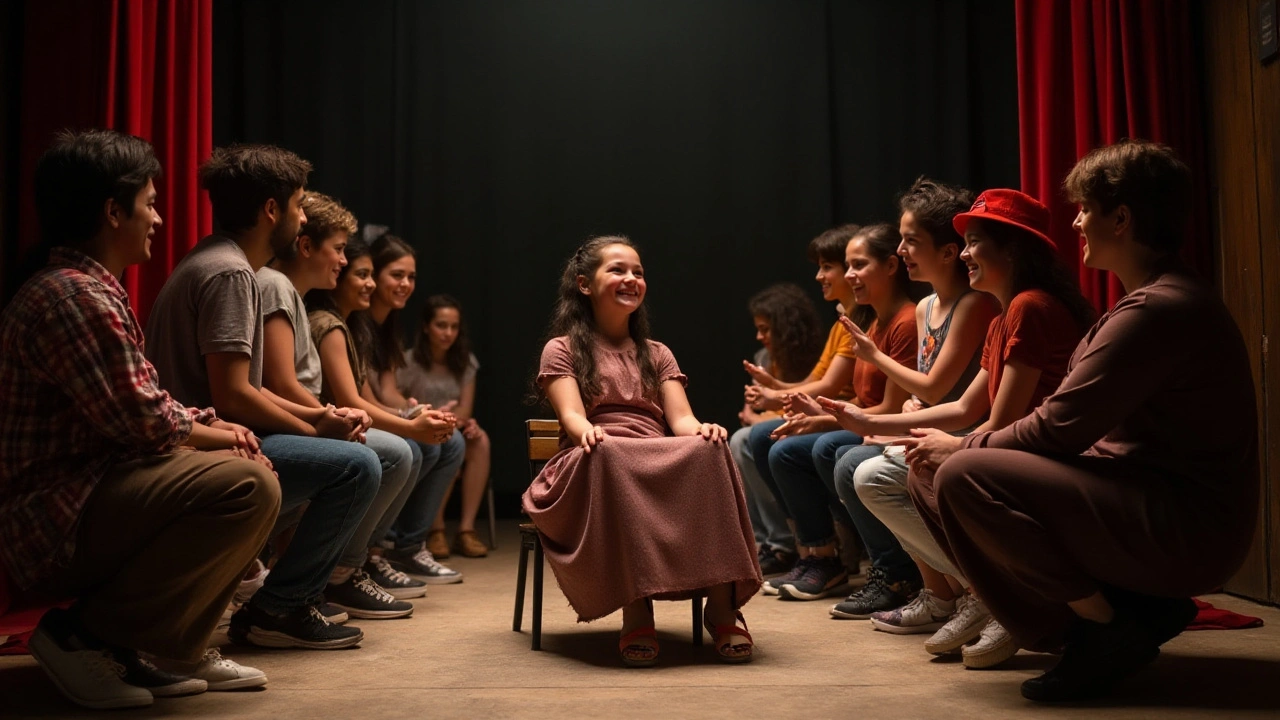
Success Stories and Testimonials
Through the transformative journey of creative arts therapies, many have unlocked new dimensions of personal growth and healing. Take, for instance, John, a war veteran who struggled with PTSD for years. Traditional therapies left him feeling stagnant, but it was through art therapy that he found solace. He used painting to express moments of silence and thunder he experienced in battle, gradually peeling back layers of buried emotions. This process not only eased his nightmares but also opened a dialogue with his family, helping them understand his internal world.
Similarly, Emily, a teenager grappling with anxiety, turned to dance movement therapy. She discovered that her anxiety could be expressed through choreography, allowing her to explore and understand her feelings in a physical space. In her dance routine, each step became a language of release, and eventually, that led to a significant decrease in her anxiety attacks. Now, Emily is an advocate for mental wellness, using her story to inspire other teens to find their voice through movement.
The resonance of these therapies is widely recognized. According to a recent study by the American Art Therapy Association, there is a documented 40% increase in emotional regulation among participants engaged in regular creative therapies. A significant metric showing that the arts hold potential not just for entertainment but profound mental healing. Mental wellness thrives on such diverse approaches, expanding beyond the confines of words to embrace a tapestry of media that connect our senses to our core selves.
Beyond individual cases, institutions are recognizing the value creative arts bring into therapeutic settings. Clinics and hospitals worldwide have integrated these into their programs, marking a cultural shift in how we perceive healing. For example, the Cleveland Clinic reports integrating music therapy to alleviate chronic pain and enhance cognitive recovery post-surgery. Patients have attested that the rhythmic and melodic interventions have not only reduced their reliance on pain medication but also imparted a sense of autonomy over their recovery path.
Such diverse testimonials showcase the versatility of creative arts. Whether it’s art, music, dance, or drama therapy, each modality provides unique pathways to healing. The broad range of people benefiting from this approach speaks volumes about its comprehensive reach. These stories bring to light a vital understanding: artistic expression, in all its forms, is an essential tool for personal growth and mental wellness. As we continue to explore these therapies, we find ourselves not just healing but thriving, tapping into a rich source of human resilience and creativity.




